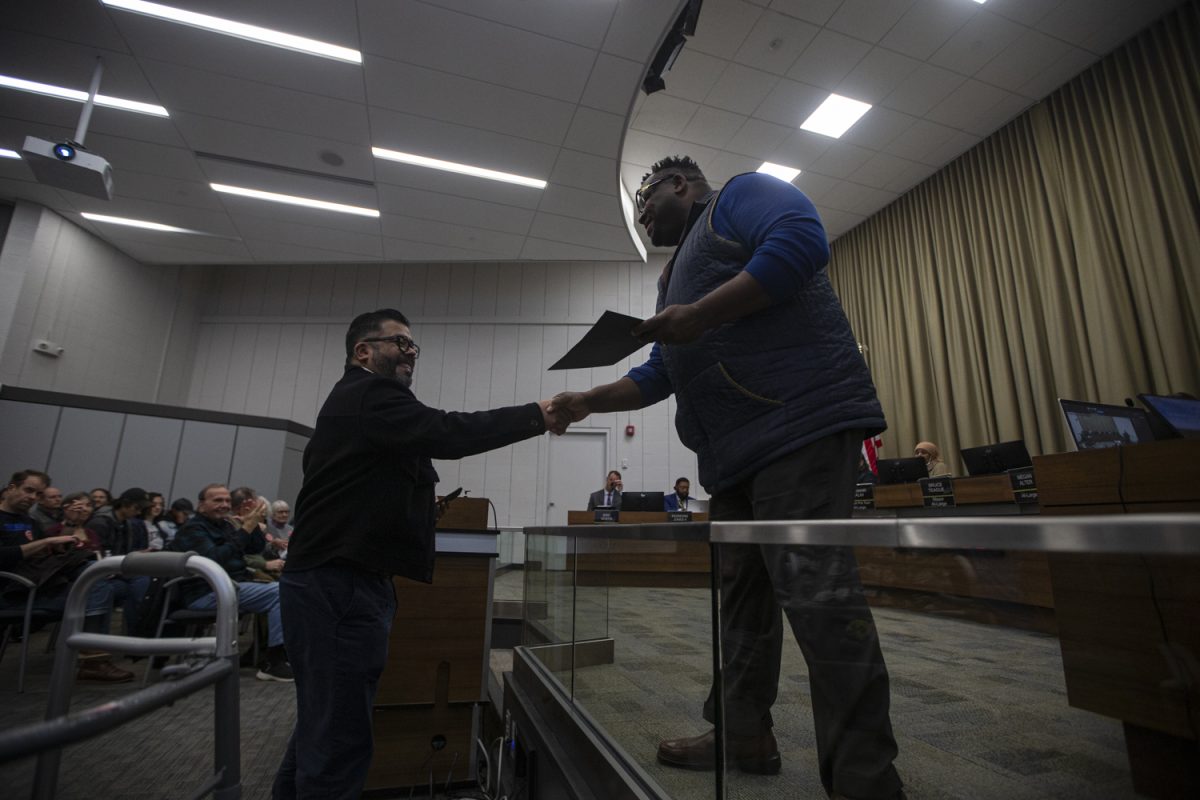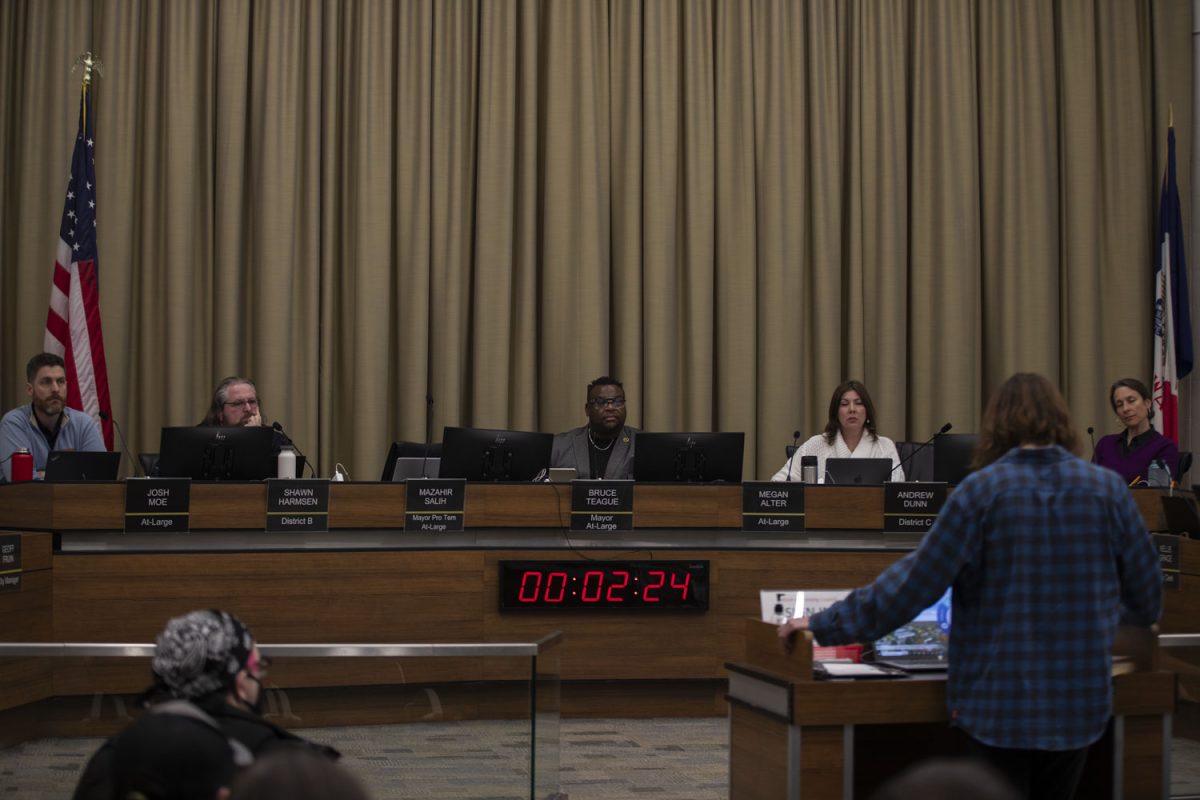In the two years since Iowa City implemented its 21-ordinance, many have expressed interest in analyzing how the ordinance has altered rates of alcohol-related crime and arrests.
Raw statistics from the Iowa City police suggest the ordinance has had a significant effect on the types of alcohol-related arrests. Out of the 36 months of alcohol-related data retrieved, the 2009-2010 and 2010-2011 academic years were sampled, revealing PAULA arrests have declined 46.3 percent and public-intoxication citations have dropped 17.2 percent. However, disorderly house charges have increased by 67.7 percent. Overall, alcohol-related crimes in Iowa City have decreased by almost 19 percent in these two academic years.
The members of the Iowa Community-Integrated Geography Organization examined this data with the understanding that while raw statistics are nice, spatial visualization was needed to better provide an added layer of illustration and context to the changes that have occurred. With a few reservations, our findings confirm alcohol-related crime has diminished in the downtown core of Iowa City while it has increased in residential areas dominated by the college-aged demographic.
The focus of our visualization is defined by areas east of the Iowa River, west of Summit Street, south of Brown Street, and north of Prentiss and Bowery Streets. In the visualization, blue marks areas that have lost crime since the ordinance, while red marks regions that have gained crime.
Before 21-ordinance opponents rejoice, we must further explain the underlying data, social research, and confounding factors that influence the overall results of our visualization.
In a 1995 paper titled "Ecological Models of Alcohol Outlets and Violent Assaults: Crime Potentials and Geospatial Analysis," Paul Gruenwald — a senior research scientist at the Prevention Research Center at the Pacific Institute for Research and Evaluation — highlights three pertinent questions regarding alcohol-related crime:
1.) What population characteristics are associated with the greater levels of alcohol-related crime?
2.) In which places is related crime more likely to be exhibited?
3.) What are the spatial features that facilitate the crimes?
By utilizing this framework, we can provide a better interpretation of the changes that have occurred since implementation of the 21-ordinance. As expected, college-age students were the primary demographic followed across 36 months of alcohol-related arrest data. However, the student’s age is a factor in the nature of the alcohol-related arrest. With underage students being pushed out of downtown and into peripheral neighborhoods, it is possible that law enforcement anticipated this migration, thus supporting the shifts of arrests in our visualization. Diminished rates of PAULA and public intoxication downtown appear to demonstrate that neighborhoods with high-density student populations attract underage alcohol consumption and increased rates of disorderly house violations.
The problems surrounding alcohol consumption in Iowa City are not going away. Our visualization serves to demonstrate the importance of spatial perspectives when assessing this issue. Place does not matter as much as access. Decreased alcohol-related arrests in one category will likely mean increased arrests in another. It is important to note that overall alcohol-related crime between the 2009-2010 and 2010-2011 academic years has reduced by 18.9 percent since the passage of the ordinance. What should be taken away from this discussion is that until changes occur in the culture at large, those who narrowly argue in favor of access or control will continue to talk past one another.
Crime Map Methodology: The Crime Map features data collected from the Iowa City police over a 36-month period from Jan. 1, 2009, to Dec. 31, 2011. Data were chosen from three arrest records that were exclusively related to alcohol. The three arrest types were PAULA, public intoxication, and disorderly house. The data were then divided into pre-ordinance and post-ordinance groups based on whether the arrests were dated before or after June 1, 2010. The addresses of the arrest locations were then geocoded to their respective latitude and longitude points. A kernel density function in the shape of a circle with a radius of 200 meters was then applied to both the pre-ordinance and post-ordinance point data. A kernel density function is a weighted sum of the points within a predefined shape such as a circle. This provides a density estimate for every location across the study area. The pre-ordinance density values were then subtracted from the post-ordinance values to obtain a final image displaying change in crime between the two 18 month periods.
A Note on the Legend: The legend’s values show the weighted sum of arrests per 100-meter by 100-meter area. This area size was chosen to roughly correspond to a city block. Since the legend is not centered on zero, the areas with the highest and lowest amounts of crime are especially darkened for visualization purposes. Therefore, the highest increases have far fewer incidences than the highest values of decreases. However, the representation of change is still preserved.
Percentage Change Methodology: To calculate the overall percentage change between academic years, data were selected from Aug. 1, 2009, to May 31, 2010, and from Aug. 1, 2010, to May 31, 2011 for the three alcohol-related arrest records. The percentage change relative to pre-ordinance arrests was then calculated based on the difference between the two sample periods.
About the group: Formed in the spring of 2011, the Iowa Community-Integrated Geography Organization is a University of Iowa student group that seeks to provide spatial analysis, mapping services, and geographic support for not-for-profit and academic institutions in the state of Iowa with a particular focus on promoting sustainable communities and supporting underserved populations.






